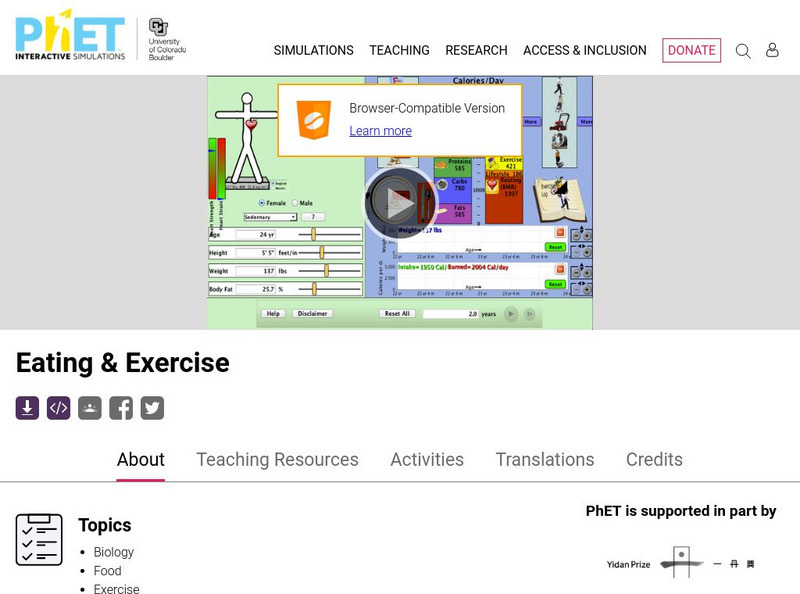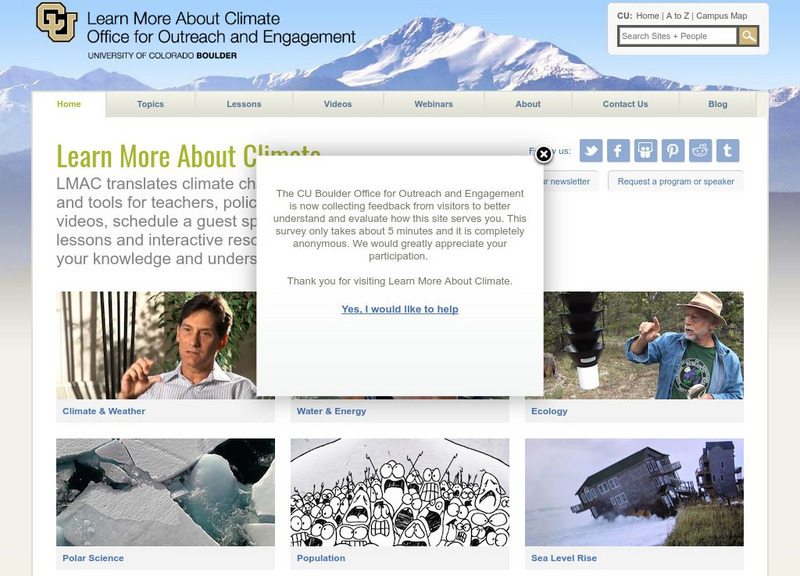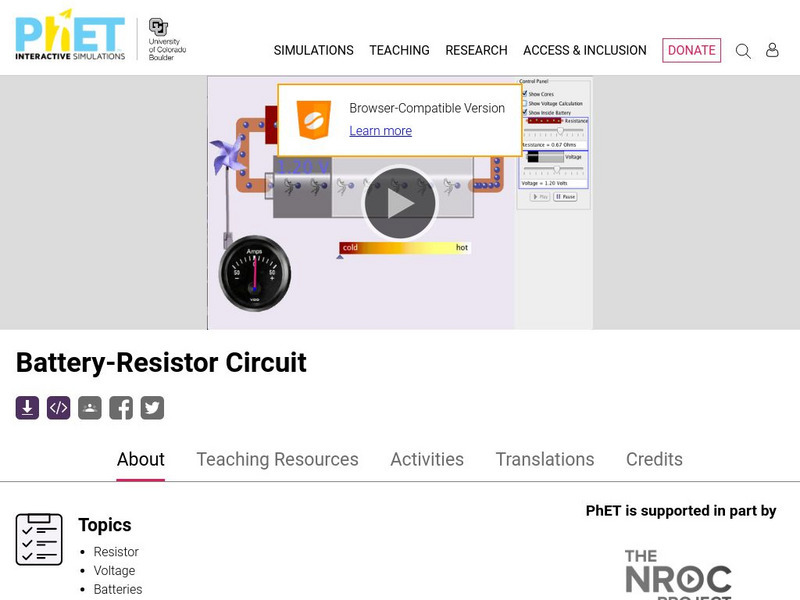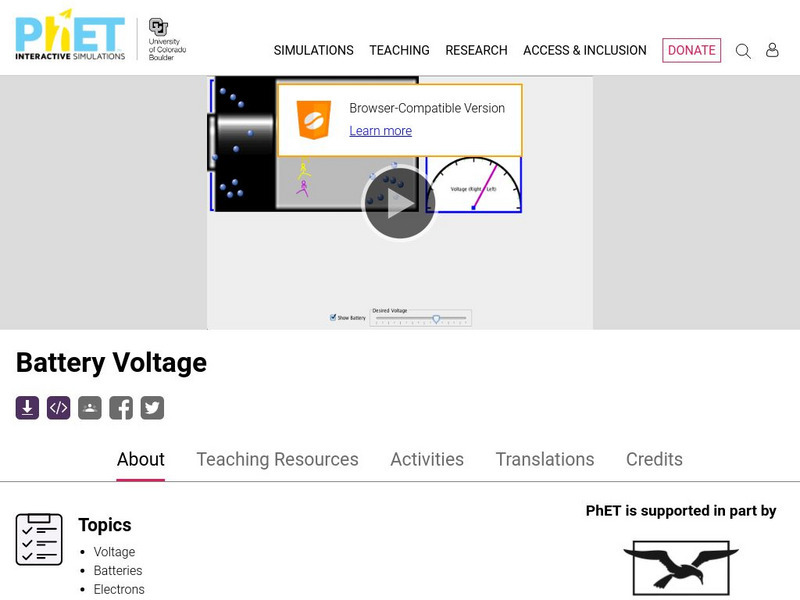University of Colorado
Is There Life on Earth?
To find life on another planet, scientists look for gases (atmosphere), water, and temperatures that are not extreme. In this activity, groups of pupils become "Titan-ians," scientists who want to explore Earth for possible life forms....
University of Colorado
Distance = Rate x Time
Every year, the moon moves 3.8 cm farther from Earth. In the 11th part of 22, classes use the distance formula. They determine the distance to the moon based upon given data and then graph Galileo spacecraft data to determine its movement.
University of Colorado
Rings and Things
Galileo first observed Saturn's rings in 1610. Through the use of a flashlight and baby powder, classes see how they can observe the rings of the outer planets from far away. Another demonstration shows how these rings, made of ice and...
University of Colorado
Space Travel Guide
Neptune takes 164.8 Earth years to travel around the sun. In the fifth of 22 lessons, young scientists create a travel guide to a planet in our solar system. They provide tips for others on what to bring, what they see, and their...
University of Colorado
Modeling Sizes of Planets
The density of the huge planet of Saturn is 0.7 g/cm3, which means it could float in water! In the second part of 22, science pupils explore the size and order of the planets. They then calculate weight and/or gravity and density of...
University of Colorado
Punnett Squares with Piebald Deer
Explore the science behind Earth's amazing diversity of life with this lesson on genetics. Looking at specific traits in piebald deer, carnations, and roan cattle, young scientists use Punnett...
University of Colorado
Phases of Charon
Charon, the largest of Pluto's moons, was discovered in 1978. Lesson is a walk through of how to solve for the phases of Charon. It uses two different points on Pluto and takes into account the tilt of the pole, the rotational axis, and...
University of Colorado
University of Colorado: Ph Et Interactive Simulations: Circuit Construction Kit
Build circuits with resistors, light bulbs, batteries, and switches. Take measurements with the realistic ammeter and voltmeter. View the circuit as a schematic diagram, or switch to a life-like view.
University of Colorado
University of Colorado: Ph Et Interactive Simulations: Ladybug Motion 2 D
Manipulate a ladybug's position, velocity, and acceleration, and see how the vectors change in this interactive simulation. Software download is necessary.
University of Colorado
University of Colorado: Ph Et Interactive Simulations: Faraday's Electromagnetic Lab
This interactive lab in electromagnetics effectively illustrates how Faraday's law works.
University of Colorado
University of Colorado: Physics 2000
Learn about physics by having fun with the interactive Java applets at this site.
University of Colorado
University of Colorado: Ph Et Interactive Simulations: Eating and Exercise
Interactive animated simulation allows students to make connections between the real world and the physical world. Uses interactive tools to explore issues such as calories, exercise, diet, fitness, and weight control.
University of Colorado
University of Colorado: Physics 2000: Bec: What Is It?
This is an understandable tutorial which guides the viewer through the innovations which led up to the verification of Bose-Einstein Condensation (BEC) in 1995. Follow the "Next," link at the bottom of the page to explore the following...
University of Colorado
University of Colorado: Ph Et Interactive Simulations: Torque
Experiment how torque causes an object to rotate. This interactive simulation shows how angular acceleration, moment of inertia, angular momentum, and torque relate to one another.
University of Colorado
University of Colorado: Ph Et Interactive Simulations: The Ramp
Which object takes more energy to push up a ramp: a file cabinet, a refrigerator, a piano, or a sleepy dog? Find out in this ramp simulation when you change the angle of the incline, change the objects, or change the friction on the ramp.
University of Colorado
University of Colorado: Ph Et Interactive Simulations: Lasers
Learn about absorption and emission by creating a laser. Pump the chamber with a photon beam, and manipulate the energy states of the laser's atoms to control its output.
University of Colorado
University of Colorado: Learn More About Climate
An extensive source of information about climate change and how it is affecting Colorado. Includes videos of interviews with scientists, lesson plans, links to 'green resources' and to sites with scientific information, and a climate...
University of Colorado
University of Colorado: Ph Et Interactive Simulations: Forces and Motion
Explore the forces at work when you try to push a filing cabinet. Create an applied force and see the resulting friction force and total force acting on the cabinet. Charts show the forces, position, velocity, and acceleration vs. time....
University of Colorado
University of Colorado: Ph Et Interactive Simulations: Alpha Decay
Watch alpha particles escape from a polonium nucleus, causing radioactive alpha decay. See how random decay times relate to the half life. Java required.
University of Colorado
University of Colorado: Ph Et Interactive Simulations: Band Structure
Explore the origin of energy bands in crystals of atoms. The structure of these bands determines how materials conduct electricity. Java required.
University of Colorado
University of Colorado: Ph Et Interactive Simulations: Battery Resistor Circuit
Look inside a resistor to see how it works. Increase the battery voltage to make more electrons flow through the resistor. Increase the resistance to block the flow of electrons. Watch the current and resistor temperature change. Java...
University of Colorado
University of Colorado: Ph Et Interactive Simulations: Battery Voltage
Look inside a battery to see how it works. Select the battery voltage and little stick figures move charges from one end of the battery to the other. A voltmeter tells you the resulting battery voltage. Java required.
University of Colorado
University of Colorado: Ph Et Interactive Simulations: Capacitor Lab
Explore how a capacitor works! Change the size of the plates and add a dielectric to see how it affects capacitance. Change the voltage and see charges built up on the plates. Shows the electric field in the capacitor. Measure voltage...
University of Colorado
University of Colorado: Ph Et Interactive Simulations: Circuit Construction Kit (Ac+dc)
This new version of the CCK adds capacitors, inductors and AC voltage sources to your toolbox! Now you can graph the current and voltage as a function of time. Java required.
























